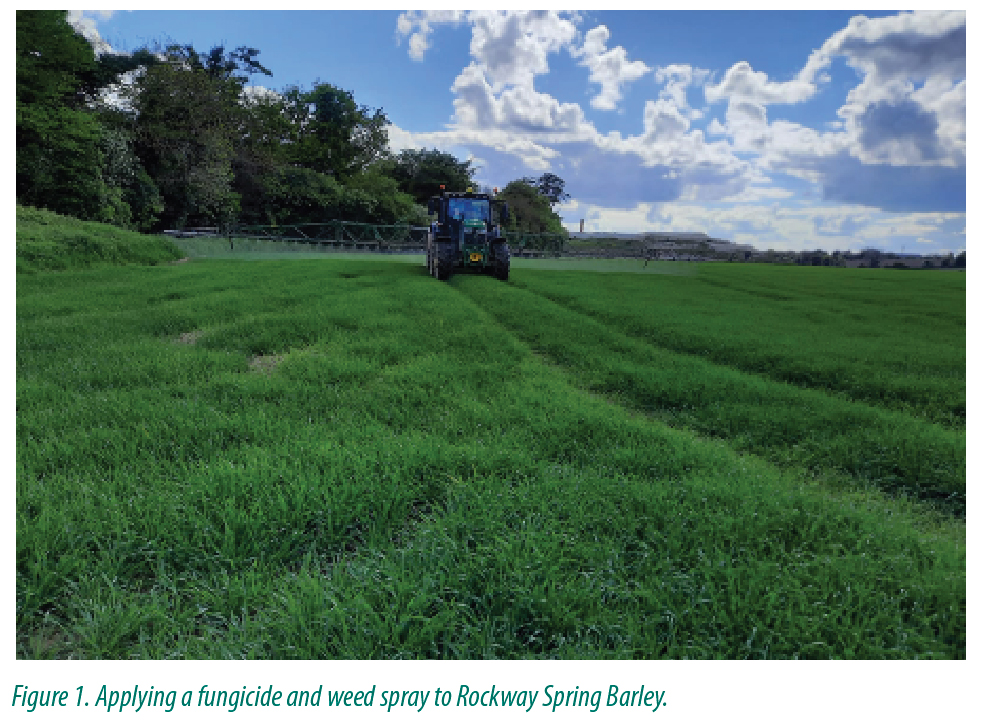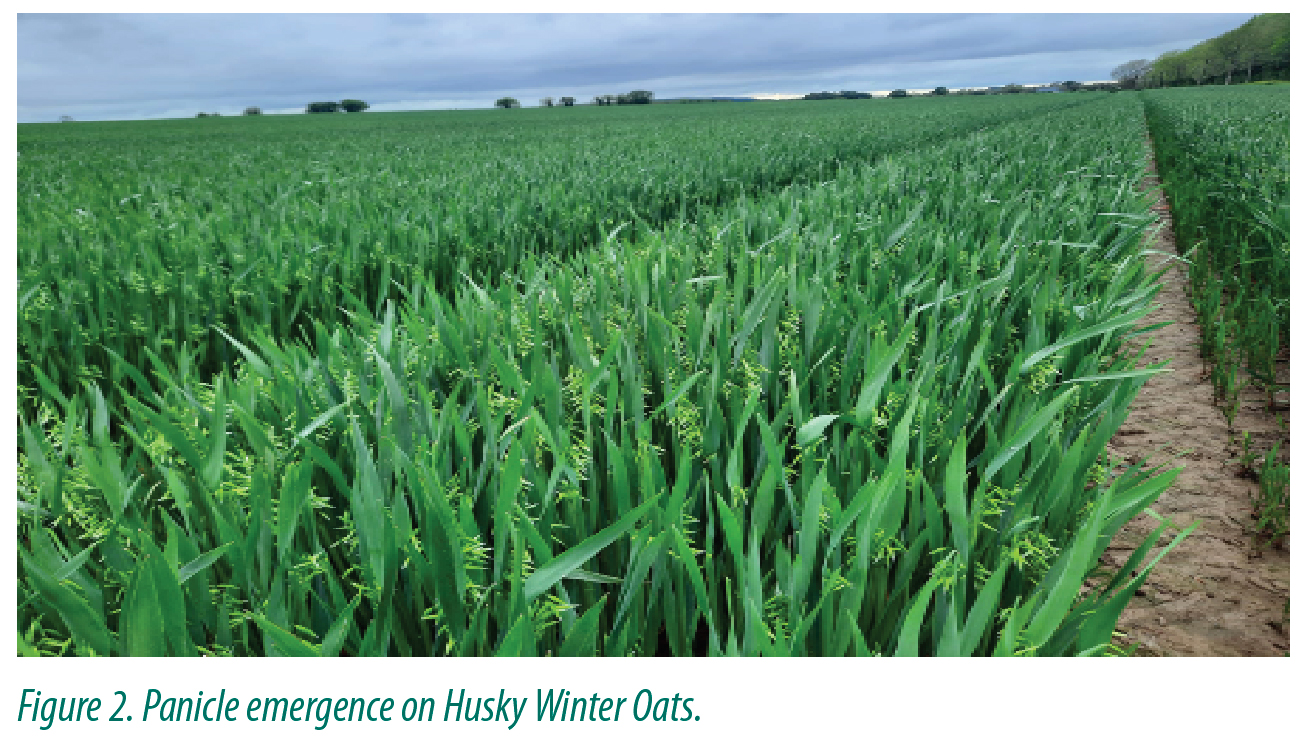As the saying goes “a wet and windy May fills the barn with corn and hay”. This years harvest will certainly put this tale to the test, considering we recorded 83.5ml of rain for the month of May, compared to 9.3ml last year.
The recent wet weather has delayed spray applications in many areas. However, the first week of June looks promising and will allow the majority of growers to get back onto schedule.
 Applying a fungicide to spring barley at the mid-late tillering stage timing is crucial; we must keep as many tillers alive as we can, and drive these on for the rest of the year. Barley’s yield potential is determined early in the season, as tiller production and survival are the most important factors determining yield in spring barley. An example of a fungicide application could be a Decoy (0.4L/ha) + Comet (0.5L/ha) mix. Target ear numbers of at least 950/m 2 can only be achieved by keeping fertile shoots alive.
Applying a fungicide to spring barley at the mid-late tillering stage timing is crucial; we must keep as many tillers alive as we can, and drive these on for the rest of the year. Barley’s yield potential is determined early in the season, as tiller production and survival are the most important factors determining yield in spring barley. An example of a fungicide application could be a Decoy (0.4L/ha) + Comet (0.5L/ha) mix. Target ear numbers of at least 950/m 2 can only be achieved by keeping fertile shoots alive.
Micronutrient deficiencies should be corrected by now to prevent tiller death. Crops around the north east vary from GS 24 – 32, similar with spring wheat, mainly due to sowing date and the maturity of different varieties. Aphids are beginning to become more visible now in crops – apply a second aphicide to late sown crops (those that were sown from April onwards) as these crops are more prone to BYDV infestation. Weed control should be taken care of ASAP if not already.
Most growers have applied their T2 applications to winter wheat by now. The new fungicides on the market, namely Questar and Revystar, have been the product of choice for high Septoria situations. For those yet to spray, use at least 80% rates as we are in a high pressure Septoria situation with the recent rainfall and warm temperatures. Maximising our green leaf area duration on the flag leaf will increase our yield potential. Finish off any remaining nitrogen applications on wheat now.
The gate is now closed on winter barley – we can let nature do the rest. Crops generally show little signs of stress and look extremely clean – a testament to the excellent efforts taken by growers in our first year without chlorothalonil. Only time will tell the extent of which Ramularia presents itself, as it is a late-appearing disease.
Ears are beginning to appear on winter oats now and are about a week away from fungicide application. Wait until the panicles are fully emerged before spraying. Apply Drummonds Super K Plus at 3L/ha to allow crops to reach their maximum potential. Potassium is an essential nutrient for straw strength in oats and raises the kph.
Article Written by: Michael Howard, Drummonds Technical Sales Advisor 086 185 5868

